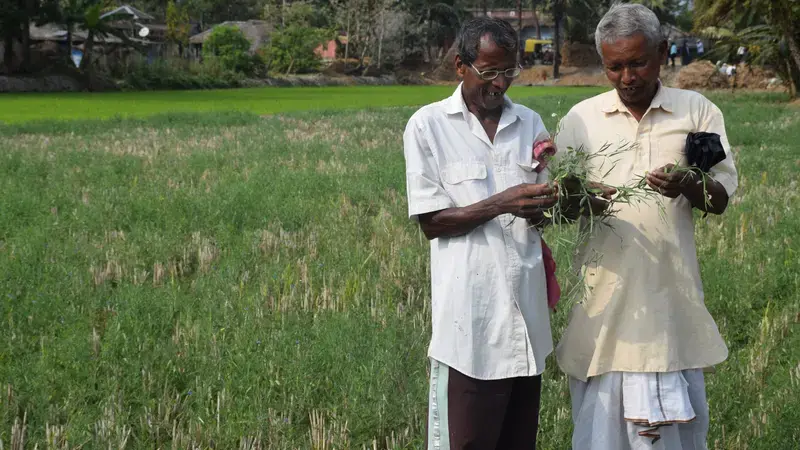ICARDA legume varieties on fallow land promote food security in South Asia

In South Asia, people’s diets rely heavily on legumes, yet demand outstrips supply further exacerbating regional vitamin and mineral deficiencies. Yet until recently, a vast area of over fifteen million hectares lies idle (fallow) every year for three months between rice harvests, so ICARDA developed crops that reach maturity quickly, so the land can be used productively for additional crops. A myriad of nutritional benefits ensued, including increasing farmers’ incomes, boosting of the national economy and better food security.
To achieve this, ICARDA first developed and bred early maturing varieties of lentil, chickpea, and high bio-mass fodder grass pea in their climate-smart breeding program and then tested their suitability to the South Asian environment through field trials in Bangladesh, India, and Nepal. The trails proved that the improved varieties like lentils could successfully be grown and harvested on the fallow lands between the short rice harvesting seasons.
ICARDA and national partners have now released the new crop varieties to farmers across South Asia, within ICARDA’s integrated innovation packages that include key support for other productivity challenges. For example, a critical constraint to achieving high yields in the region is the difficulty farmers face in sourcing quality seeds during planting time. ICARDA scientists therefore invited farmers associations to participate in Village Seed Hubs (VSH) and train farmers on quality seed production and related agricultural approaches to ensure their availability.
IMPACT
- Seventy-six VSHs were established across the three countries, producing over 117 tons of certified seeds.
- A total of 23,845 smallholder farmers were directly involved, receiving quality seeds and inputs. This number far exceeds the projected attendance of 15,000 farmers. It is estimated that an additional 150,000 farmers indirectly benefitted through farmer-to-farmer seeds and knowledge sharing. Simultaneously, 7,355 women were also trained on value addition, processing, and packaging.
- Six hundred farmers in the area reported lentil yield nearly five times higher than previously while reducing water consumption and growing in a shorter period. The new variety of lentils weighs more because their size is more significant than those grown previously; therefore, farmers achieve higher prices at the market.
- Ensuring availability of all required technologies, an estimate of rice-fallow lands in Bangladesh could produce 219,000 tons of bonus legume crops where previously nothing was grown, Nepal an additional 100,000 tons of legume crops, and India an extra production of 1.05 m tons of legume crops.
